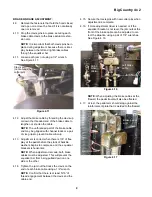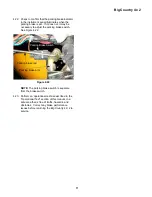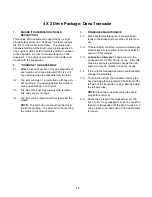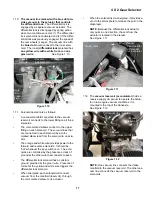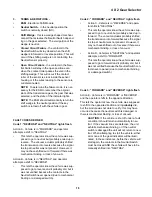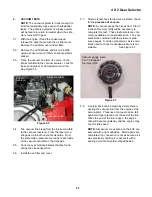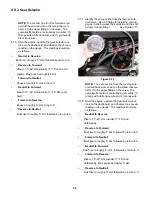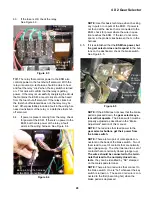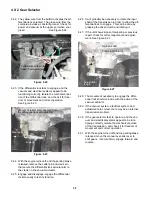
4 X 2 Gear Selector
23
5.
VACUUM TESTS
NOTE:
The vacuum system is robust enough to
function reasonably well, even with substantial
leaks. The primary symptom of a leaky system
will be failure to return to neutral when the vehi-
cle is turned-off in gear.
5.1.
With the engine off and the choke closed,
release the clips that secure the air filter cover.
Remove the air filter cover and air filter.
5.2.
Remove the air filter base and air horn baffle
using a socket wrench (10mm socket and 8mm
socket).
5.3.
Trace the vacuum line from its source on the
intake manifold to the vacuum actuator. Look for
loose connections or damaged vacuum line.
See Figure 5.3.
5.4.
The vacuum lines lead from the intake manifold
to the vacuum reservoir. From the reservoir, a
line goes up to both vacuum solenoids. From
the solenoids, a separate line leads to each side
of the vacuum actuator on the transaxle.
5.5.
Correct any potential problems that are found
during the visual inspection.
5.6.
Install the air filter and cover.
Figure 5.3
Intake manifold
Line to
reservoir
Vacuum port
5.7.
After a visual check for obvious problems, check
for the
presence of vacuum.
NOTE:
A vacuum gauge that reads from 0 to 30
inches of mercury (HG) will be necessary to
complete this test. These instruments are com-
monly available at a reasonable price. They are
sometimes combined with low pressure pres-
sure gauges. A U-tube manometer, as is some-
times used to check crankcase pressure is not
suitable. See Figure 5.7.
5.8.
A quick check can be made by simply discon-
necting the vacuum line from the engine at the
accumulator. Presence of vacuum can be felt
against a finger placed over the end of the line.
When the end of the line is open, the engine
note will become unsteady and the engine may
hunt for idle speed.
NOTE:
All vacuum connections on the 4X2 are
secured with a light adhesive. After repairs are
completed, if a connection is not as secure as it
was previously, replace it or secure it with a
sparing amount of weather strip adhesive.
Figure 5.7
Vacuum gauge scale:
0 to 30 inches of
mercury (HG)
Summary of Contents for BIG COUNTRY 4X2
Page 2: ......
Page 4: ......
Page 16: ...Big Country 4 x 2 12...
Page 38: ...4 X 2 Gear Selector 34...

